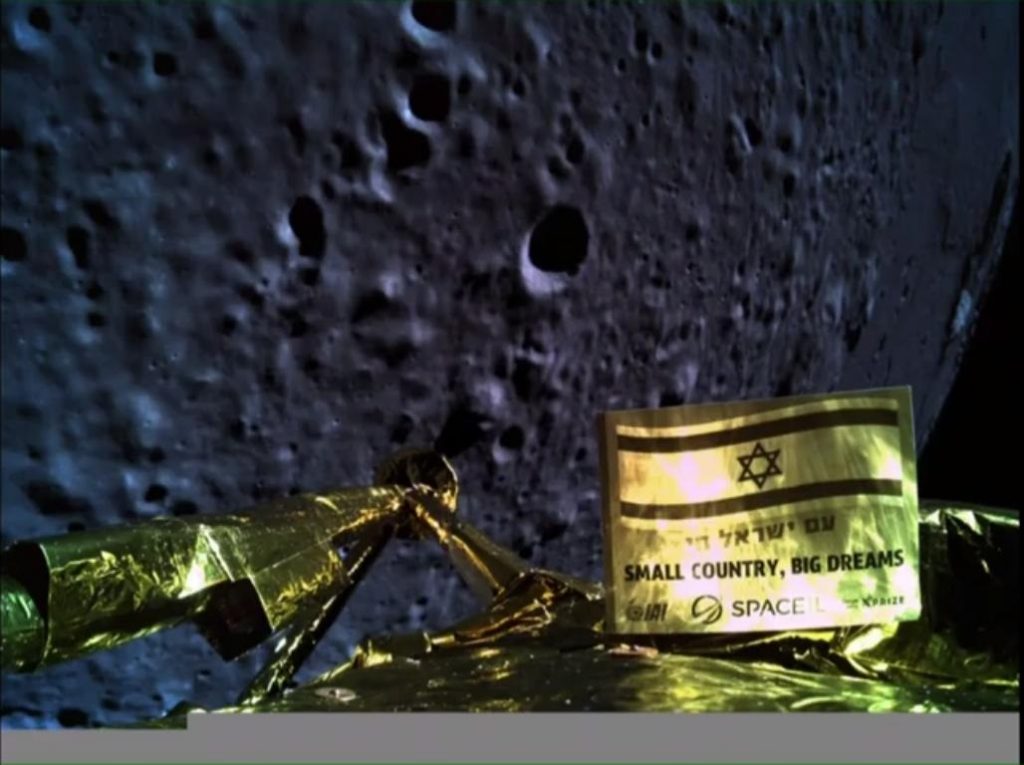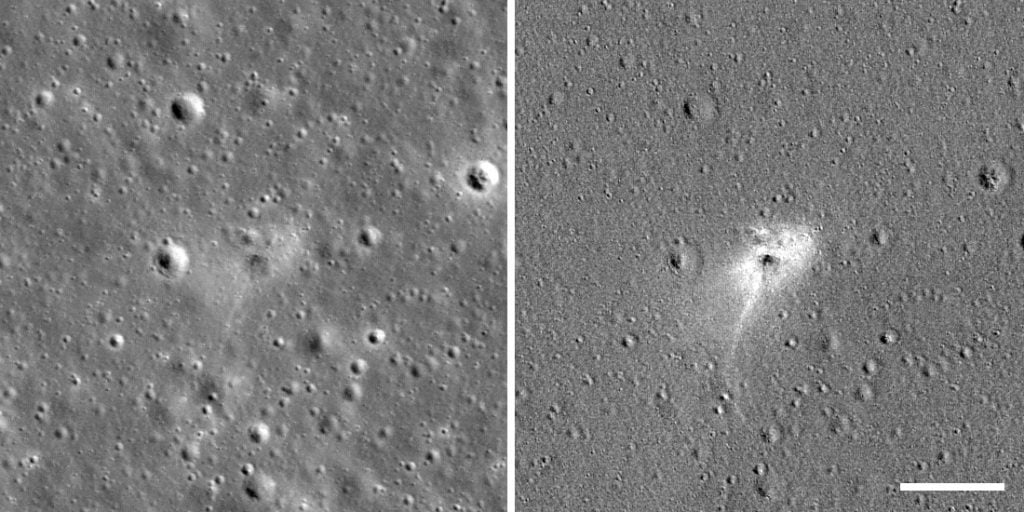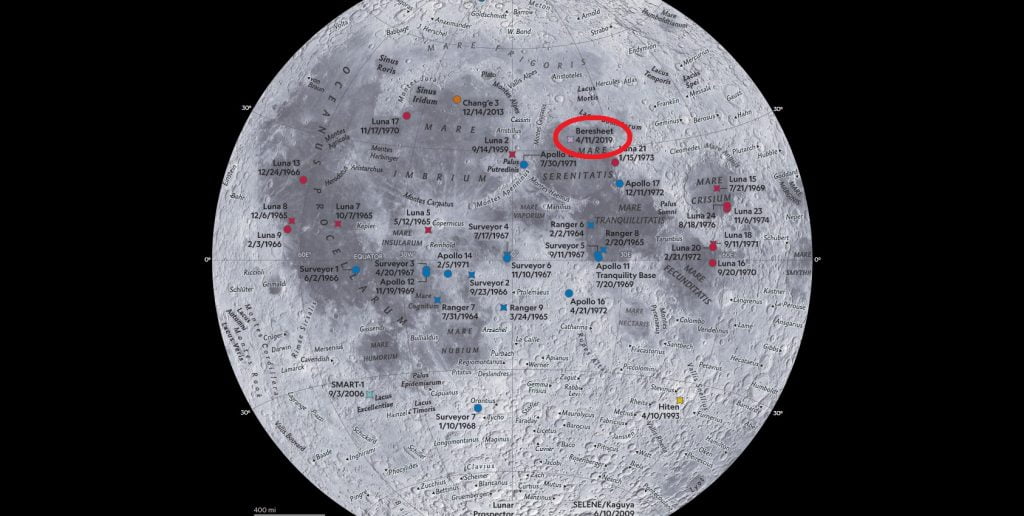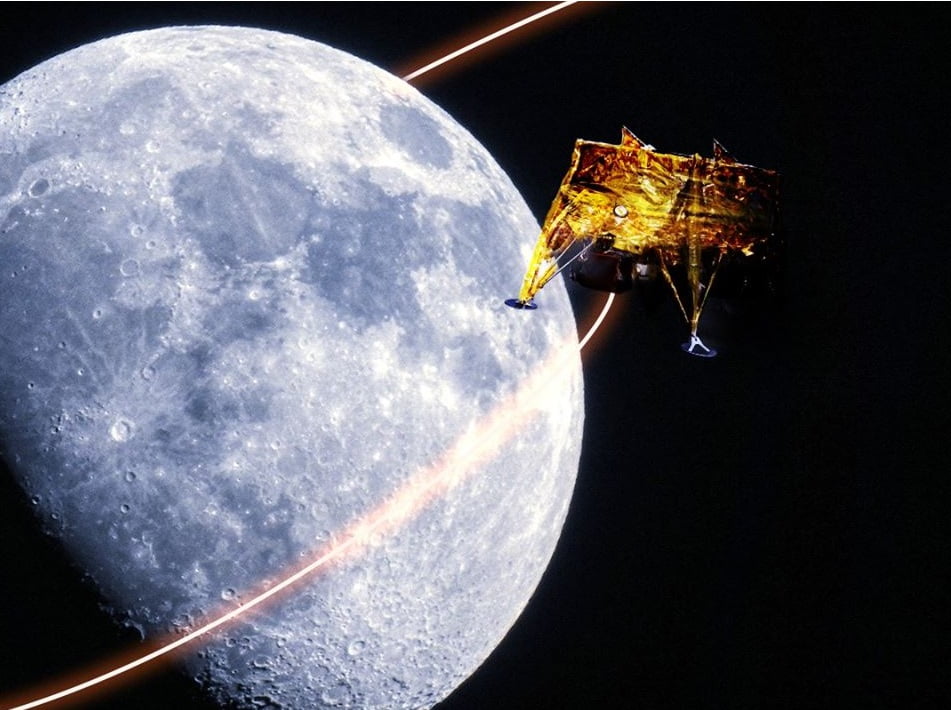Israel will not attempt a second mission to the moon after all, Israeli non-profit SpaceIL, the organization behind Israel’s historic initiative to land a spacecraft on the moon, said this week. This despite a previous and much-publicized announcement that it would launch a second spacecraft, just days after its first one, Beresheet, crash-landed on the lunar surface.
The crash on April 11 dashed Israel’s hopes of becoming the fourth country in the world (after Russia, China, and the US) to complete a controlled lunar landing.
Instead of another moon mission, SpaceIL said it would seek out “another, significant objective for Beresheet 2.0.” The details of the endeavor were not yet known.
SEE ALSO:Inside Israel’s Beresheet Spacecraft – A Great Technological Achievement
“Beresheet’s journey to the moon, despite its difficult landing, is etched into our consciousness in Israel and the world as successful, ground-breaking and significant to the nature of future mission by humans to the moon,” SpaceIL said (Hebrew) on its social media channels.

SpaceIL said the feedback received over the past months from global space experts point to the mission being perceived as a “resounding success that broke many world records” including that it was the smallest spacecraft built on a shoestring budget (estimated $100 million) in the world to have made it to the moon, traveling the largest distance there. It was also the only moon mission to have been largely privately funded.
“Embarking on a similar journey would not set the bar required for ground-breaking missions. Therefore, it’s been decided to seek another significant challenge,” SpaceIL said.
Details of the new mission will follow, the organization said.
Last month, NASA released a photo of the crash site of Israel’s Beresheet lunar lander. The photo was taken by the Lunar Reconnaissance Orbiter Camera (LROC) 11 days after the spacecraft crashed into the moon’s surface. NASA has partnered with SpaceIL on key aspects of the mission.

The mission was launched on February 22 (Israel time), riding piggyback on a SpaceX Falcon 9 rocket. Beresheet had orbited the Earth and then the moon, traveling 6.5 million km before attempting its landing.
Sign up for our free weekly newsletter
SubscribeInitial data gathered by the engineering teams of SpaceIL and IAI suggested that at just mere meters from the lunar surface, a technical glitch triggered a chain of events that caused the main engine of the spacecraft to malfunction, making it impossible to stop Beresheet’s velocity. Beresheet overcame the issue by restarting the engine, but it was too late and the spacecraft crashed.
National Geographic recently added Beresheet to its moon map exploring 50 years of lunar visits. Its first such map was created in 1969 as the Apollo 11 mission closed in on its goal.
The new version of the map “uses a mosaic of some 15,000 images and detailed height measurements from NASA’s Lunar Reconnaissance Orbiter, which has surveyed the entire surface,” National Geographic wrote.
“The moon is peppered with probes and landers, the legacy of human efforts to explore it,” it said.

SEE ALSO: NASA Releases Photo Of Israeli Spacecraft’s Crash Site On Moon
SpaceIL was founded in 2011 as a dream by three young engineers – Yariv Bash, Kfir Damari and Yonatan Winetraub – to take part in the Google Lunar X Prize competition, an international contest that challenged the world’s engineers to create and send the first private lander to the moon.
And though the contest deadline passed last year on March 31, 2018 and the $20 million prize went unclaimed, SpaceIL decided to push forth with the project, culminating in the April 11 crash.

SpaceIL’s mission with Beresheet was privately funded by philanthropists, including its president, Israel-South African entrepreneur Morris Khan, but received some government funding including $2 million from the Israeli Ministry of Science and Technology.
For more on Israel’s journey to the moon, see here.
Related posts

Editors’ & Readers’ Choice: 10 Favorite NoCamels Articles

Forward Facing: What Does The Future Hold For Israeli High-Tech?

Impact Innovation: Israeli Startups That Could Shape Our Future




Facebook comments